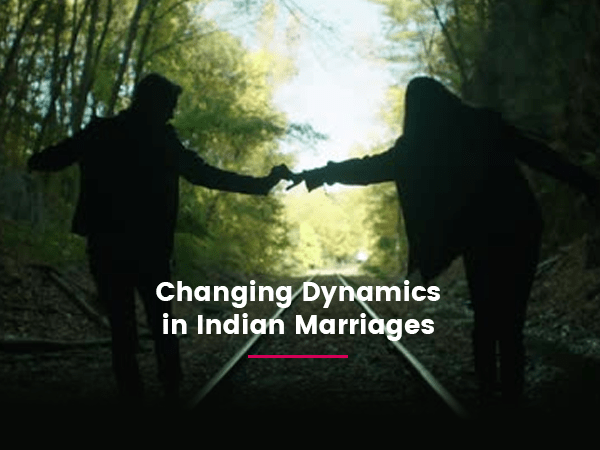Marriage is a space wherein we derive companionship, emotional fulfillment and mutual growth.
The evolvement of this institution over the last 2 decades has witnessed a change in the thought pattern, personality and expectations from life, on part of both the partners.
Increasing interaction with the opposite gender, beginning with schooling, has permitted a better understanding of the partners. This has come with societal acceptance of need for interaction between us as a species.
1. Communication: Communication between partners is now a 2-way thing – expressing and also listening. Those in their late 20s & 30s have grown up watching the misunderstandings created between couples in relationships due to lack of communication, and are certainly better equipped to convey & listen as well. Positive communication has helped in expressing one’s concerns & opinions. Good communication is also about the ability to pay attention to the partner’s needs and experiences in the bond of marriage.
When a partner does not openly talk about their expectations (Negative communication) and presumes a reason to their partner’s behaviour, it causes a rift in the relationship. This builds up, over the next few incidences, and lowers her/ his tolerance towards the partner. Anger, frustration, resentment, arguments are then the result. Take out time on a weekly basis to sit and talk to your partner about what’s bothering them & what you can do to strengthen your bonding.
2. Add-on roles: With better access to education & liberalisation, women are now more or less self-reliant and able to share financial responsibilities of the household. The men, on the other hand, have not been trained to share the duties of household chores. Although this has left them confused, the men are learning as it comes. We do have house-husbands, husbands working from home or father’s taking paternity leaves.
3. Mutual Respect: The need for a personal space is better understood and respected by the partner. Day-out with one’s friends, travelling with buddies, professional time etc. is neither questioned nor disturbing for the partners. At the same time, there is also an extreme of ‘personal space’ being observed, which creates a disconnect between the partners. Practice moderation. When the timing (of ‘need for personal space’) of both partners are not in sync, it becomes a challenge.
4. Family decisions are mutually taken. We now see a need to understand the partner’s opinions and viewpoints in relationships.
5. Sexual liberalisation: Discussing about their sexual activity would leave couples awkward. With the recent liberalisation, there is a better understanding of sexual intimacy as a need and a way of bonding. The freedom of expressing sexual preferences, likes/ dislikes and concerns opens up better channels of communication between the two partners. It makes your partner accept themselves better. Acknowledging and understanding your partner’s needs also builds up mutual trust & respect.
6. Lack of communication & quality time together is a challenge in the present social scenario, due to the professional commitments. It brings in an emotional void, leading to an increased incidence of infidelity in marriages. The best one could invest in a marriage is efforts to nurture the bond.
Seek help when it is difficult to solve issues.
This bond between the couples has been an ever-evolving one, socially and individually both. It is akin to two people driving their two individual cars, and keeping up pace to be with each other.






,